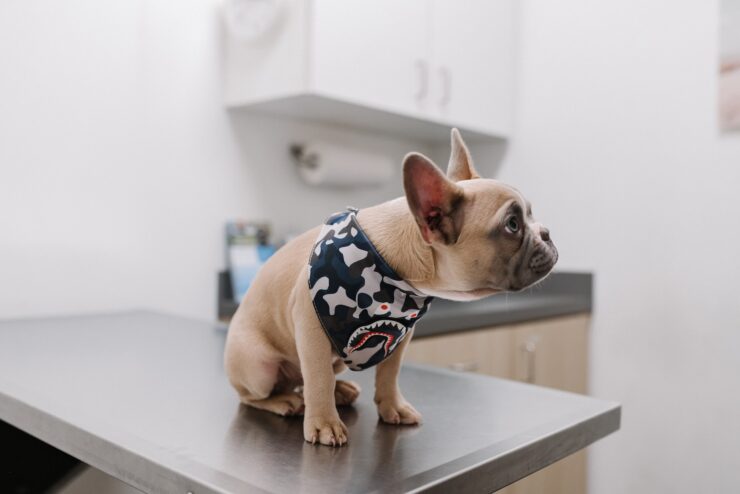Many people are aware that it is possible to induce vomiting in dogs by using hydrogen peroxide. But using hydrogen peroxide is not without potential complications, and there are alternatives.
Hydrogen peroxide works by creating enough irritation to the mouth, esophagus and stomach lining that vomiting occurs. Mild side effects to hydrogen peroxide ingestion can include continued vomiting or poor appetite.
When this occurs, the patient is typically treated with antacids and stomach protectants until the gut has a chance to heal.
In rare cases, however, the side effects do not stop at mild irritation. Severe gastritis, or inflammation of the stomach, can occur, followed by ulceration and bleeding. Although very rare, pets have died from internal bleeding due to hydrogen peroxide toxicity.
| Side Effect | Description | Symptoms/Complications |
|---|---|---|
| Gastrointestinal irritation | Ingesting hydrogen peroxide can cause irritation in the dog’s gastrointestinal tract. | Vomiting, diarrhea, abdominal pain |
| Excessive vomiting | Hydrogen peroxide is used to induce vomiting, but sometimes excessive vomiting can occur. | Dehydration, electrolyte imbalances, aspiration pneumonia risk |
| Aspiration pneumonia | If a dog inhales the vomit produced by hydrogen peroxide ingestion, it can lead to aspiration pneumonia, a severe lung infection. | Coughing, difficulty breathing, fever, lethargy, bluish gums |
| Tissue damage | When used topically, hydrogen peroxide can cause tissue damage and delay wound healing by breaking down healthy cells in addition to bacteria. | Prolonged healing times, increased risk of infection |
| Oxygen gas embolism | In rare cases, administering hydrogen peroxide may lead to the formation of oxygen bubbles in the bloodstream, known as an oxygen gas embolism. This can be life-threatening and requires emergency veterinary care. | Rapid breathing, difficulty breathing, weakness, loss of consciousness, seizures |
| Allergic reactions | Though uncommon, some dogs may have an allergic reaction to hydrogen peroxide, resulting in an immune response. | Hives, facial swelling, difficulty breathing |

Another potential but rare side effect of hydrogen peroxide ingestion is a gas emboli, an air clot in the blood vessels. Hydrogen peroxide will release oxygen when it reacts with tissue. This excess release of gas can be taken up by the inflamed stomach tissue, leading to this potentially fatal complication.
There are safer alternatives to using hydrogen peroxide to induce vomiting. Veterinarians will often give a medication called apomorphine to dogs, which is typically very effective in inducing vomiting. This medication is given through an IV. Alternatively, a small tablet can be placed under the lower eyelid for absorption. Rather than creating inflammation in the stomach, the drug stimulates the nausea centers of the brain and causes vomiting.
Ideally, if your dog has ingested something toxic, it is safer to bring him to the veterinarian than to induce vomiting at home. But there may be times when the risks of not inducing vomiting outweigh the risks of gastrointestinal irritation from hydrogen peroxide.
If your pet has ingested something extremely toxic, like rat poison, and you cannot bring your dog to a veterinary clinic in a timely manner, then using hydrogen peroxide would be a better choice then allowing that poison to be absorbed. Because there may be some emergency situations in which hydrogen peroxide is the better choice than not vomiting at all, it is important to know the proper way to use hydrogen peroxide.

The first thing to know is that you should never use hydrogen peroxide that is more concentrated then 3 percent. For example, 10 percent hydrogen peroxide is extremely corrosive to the gastrointestinal lining and should never be used.
The dose of 3 percent hydrogen peroxide is 1 milliliter per pound of dog. For example, a 20-pound dog would get 20 milliliters of hydrogen peroxide, or about 4 teaspoons.
If it has been more than 15 minutes after administration of the hydrogen peroxide and vomiting has not occurred, you may re-dose one more time. Do not continue to give your dog hydrogen peroxide if he is not vomiting. This could lead to an overdose and hydrogen peroxide toxicity. Not all dogs will vomit when given hydrogen peroxide.
There are times when it is contraindicated to induce vomiting — if, for example, your pet is seizing or extremely lethargic from the toxin he ingested. These animals are at high risk of aspirating hydrogen peroxide.
There are some substances that pets eat where it is worse for it to come back up. If your pet has ingested sharp objects, inducing vomiting may create risk for getting these items lodged in the esophagus.
Also, it should be noted that you should never give hydrogen peroxide to a cat.
Sometimes, the substance that your pet has eaten has a mild enough effect or it was at a small enough dose that vomiting isn’t even necessary.
When it comes to using hydrogen peroxide on your dog, it’s important to know the proper guidelines. But sometimes, even with the best intentions, things can go wrong. If your dog has elevated alkaline phosphatase levels, it may be a sign of a larger health issue.
Side effects of giving dog hydrogen peroxide
Although hydrogen peroxide can be beneficial for dogs in certain situations, it’s essential to be aware of the potential side effects when administering it. Some of the side effects include:
- Gastrointestinal irritation: Ingesting hydrogen peroxide can cause irritation and discomfort in the dog’s gastrointestinal tract, leading to symptoms such as vomiting, diarrhea, and abdominal pain.
- Excessive vomiting: While hydrogen peroxide is often used to induce vomiting in dogs that have ingested toxic substances, excessive vomiting can occur, leading to dehydration, electrolyte imbalances, and aspiration pneumonia.
- Aspiration pneumonia: If a dog inhales the vomit produced by hydrogen peroxide ingestion, it can lead to aspiration pneumonia, a severe lung infection that requires immediate veterinary attention.
- Tissue damage: When used topically, hydrogen peroxide can cause tissue damage and delay wound healing by breaking down healthy cells in addition to bacteria. This damage can lead to prolonged healing times and increased risk of infection.
- Oxygen gas embolism: In rare cases, administering hydrogen peroxide may lead to the formation of oxygen bubbles in the bloodstream, known as an oxygen gas embolism. This can be life-threatening and requires emergency veterinary care.
- Allergic reactions: Though uncommon, some dogs may have an allergic reaction to hydrogen peroxide, resulting in hives, facial swelling, and difficulty breathing. If you notice any of these symptoms, seek veterinary attention immediately.
I gave my dog hydrogen peroxide and he didn’t vomit
If you administered hydrogen peroxide to your dog to induce vomiting, but your dog hasn’t vomited, you should take the following steps:
- Stay calm: Remember that panicking won’t help the situation. Remain calm and focused to make the best decisions for your dog’s well-being.
- Check the dosage: Ensure that you administered the correct dosage based on your dog’s weight. The general guideline is 1 teaspoon (5 mL) of 3% hydrogen peroxide per 10 pounds (4.5 kg) of body weight. However, you should consult your veterinarian for a more specific recommendation.
- Wait a few minutes: It can take up to 15-20 minutes for hydrogen peroxide to take effect. Observe your dog during this time and ensure they are in a safe and comfortable environment.
- Contact your veterinarian: If your dog still hasn’t vomited after 15-20 minutes, call your veterinarian for advice. They may recommend administering another dose of hydrogen peroxide, or they may have alternative instructions for you to follow.
- Do not exceed recommended dosages: It is important not to give your dog more than the recommended amount of hydrogen peroxide without veterinary guidance, as excessive amounts can lead to harmful side effects.
- Visit the vet: If your dog does not vomit after following your veterinarian’s recommendations, it’s crucial to take your dog to the vet or an emergency animal clinic for evaluation and further treatment. Your veterinarian may need to induce vomiting through other means or administer specific treatments based on the ingested substance.














